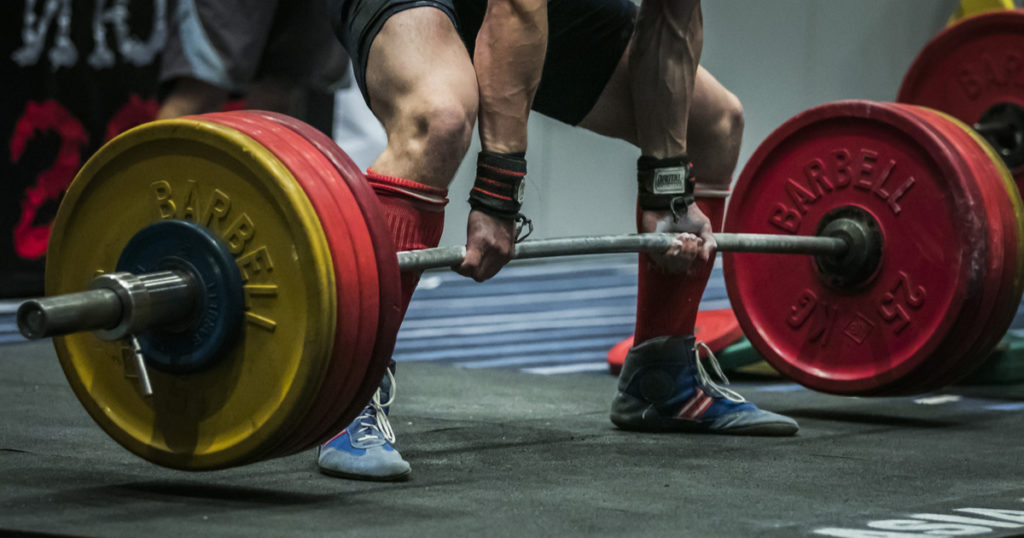It goes without saying that booty training is, well, a “hot” topic on social media (pun intended). While glute training advice is typically geared towards women, the fact is, everyone, especially powerlifters, can benefit from strengthening their glutes. In fact, I’d go so far as to say that most powerlifters neglect their entire posterior chain — and that may well go double for bodybuilders.
Strengthening my posterior chain, especially my glutes and hamstrings, has transferred into big gains on my squat and deadlift. I have a tendency to let my lower back work too much in both my squats and deadlifts, so the more I can strengthen the glutes and hammies, the less stress I’ll be forced to place on that potentially vulnerable musculature. I’ve also benefitted from increased strength off the floor and out of the hole!
In terms of physique, most everyone knows that shredded glutes are the hallmark of good conditioning. Not everyone knows, however, that having bigger glutes helps accentuate that conditioning. Same goes for hamstrings: a great sweep could very well make the difference on poses like quarter turns, side chest and tri, and shots from the back.
Admittedly, it can be difficult to get the feel for developing the glutes. Here’s how I suggest starting out.

My Favorite Glute Movement
My favorite movement for training glutes is an atypical one – in fact, it’s one usually used to strengthen or rehab the lower back, not the whole posterior chain. It’s the reverse hyper, but it’s not performed in the conventional manner.
Instead, try this:
- Load the machine with a very light weight — I usually start with 20 pounds.
- Position yourself in the usual way, with your chest as close to the pad as possible, hip crease against the edge of the pad, and strap behind ankles.
- Keep your toes and heels together throughout the entire movement.
- Begin the lift by contracting your glutes, while keeping your abs tight. Try to bring your feet up to the level of your torso.
- At the top of the movement, squeeze your glutes and hold for a one-second count.
- Lower the weight under control.
- Repeat for fairly high reps (up to 20).
I’ve emphasized step 3 because this is a crucial part of the movement pattern, and one that’s easy to cheat at. If you have the discipline to avoid that pitfall, you’ll probably have a lot of difficulty loading up the machine. But in my experience, despite using less resistance, the strength built using this style transfers much better to the powerlifts, and develops the glutes better, too.
Using the Glutes in the Squat and Deadlift
To some degree, using the glutes depends on your ability to “feel” the muscle working, especially at the bottom end of the movement (in the hole or off the floor). However, there are some cues and techniques that can help you to recruit the glutes even more. Perhaps the most common cues are these:
- Twist/claw your feet into the ground
- Spread the floor
- Pull the hips down and chest up
No one cue resonates with everyone, so experiment with those and see if any work for you.
Be sure to be mindful of your feet, as well. Many lifters tend to place most of their weight on the balls of the feet because it allows easier quad recruitment. Most people are more comfortable using the quads because that’s more common in daily life: we use our quads to walk up stairs, jump, kick, and so on.
To load the hamstrings and glutes, you must root your feet, or balance your weight across your entire foot. It’s really not too hard to get the hang of, but it IS difficult to remember to do so all the time. It might help to think of your feet like tripods: you’re distributing your weight among your big toe, little toe, and heel.
Other Good Glute Movements
1. Monster Walk
The perfect warmup for any lower-body session, the Monster Walk is a great way to get the glutes firing before performing more demanding work. You can use a hip circle to make this easier; I recommend one from Pioneer Fitness.
2. Pull Through
This one is probably my absolute favorite. It can be performed anywhere, using bands or cables, and is excellent not only for glute development but for rooting practice, as well. If you don’t keep your foot position perfect, you’ll notice your lower back and abs working, but not much else!
If you’re really struggling, try holding a vacuum as you perform the lift, as this will limit your ability to use the abs or lower back to a small degree – but even that can make a big difference in isolation movements.
3. Hip Thrust
As popular as it is, I actually don’t like the hip thrust all that much, because it is very easy to cheat by simply using your lower back to perform the majority of the work. Any time you see someone really loading up a hip thrust, that’s probably what’s going on. You can learn more in the video below:
4. Machines (Kickback)
If you have access to hip abduction or glute kickback machines, by all means – use them! Machines are a great tool for the glutes because they force you into the proper movement patterns. That allows you to more easily feel the target muscles working, and from there you’ll be able to execute free-weight and compound movements more easily.
A Sample Glute Workout
This one is perfect for adding to the end of a squat or deadlift session. Complete three rounds of:
- Cable Pull-Throughs, 12 reps
- Monster Walk, 10 steps each way (20 total)
- Reverse Hyper, 8 reps
Rest a full three minutes between rounds so that you’re fresh enough to really focus on proper execution, and I guarantee your glutes will benefit!
Feature image from sportpoint / Shutterstock